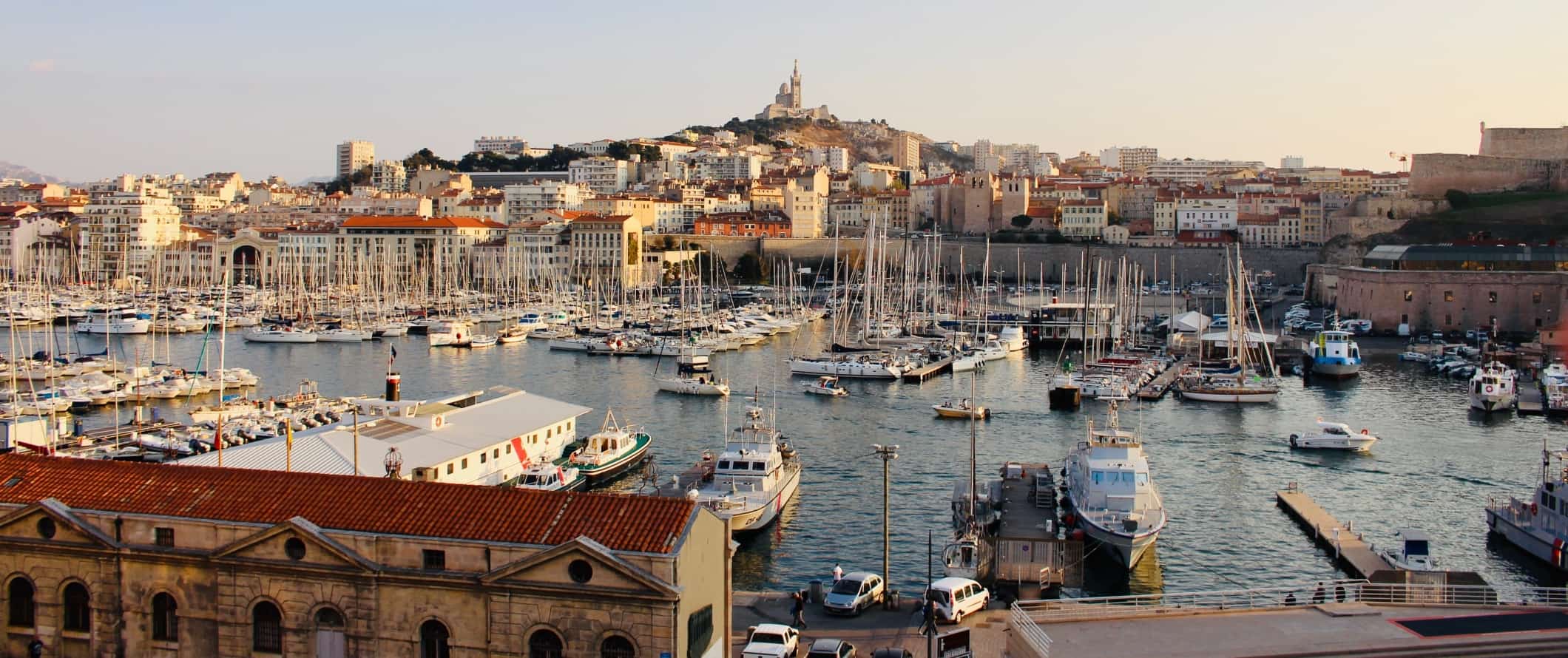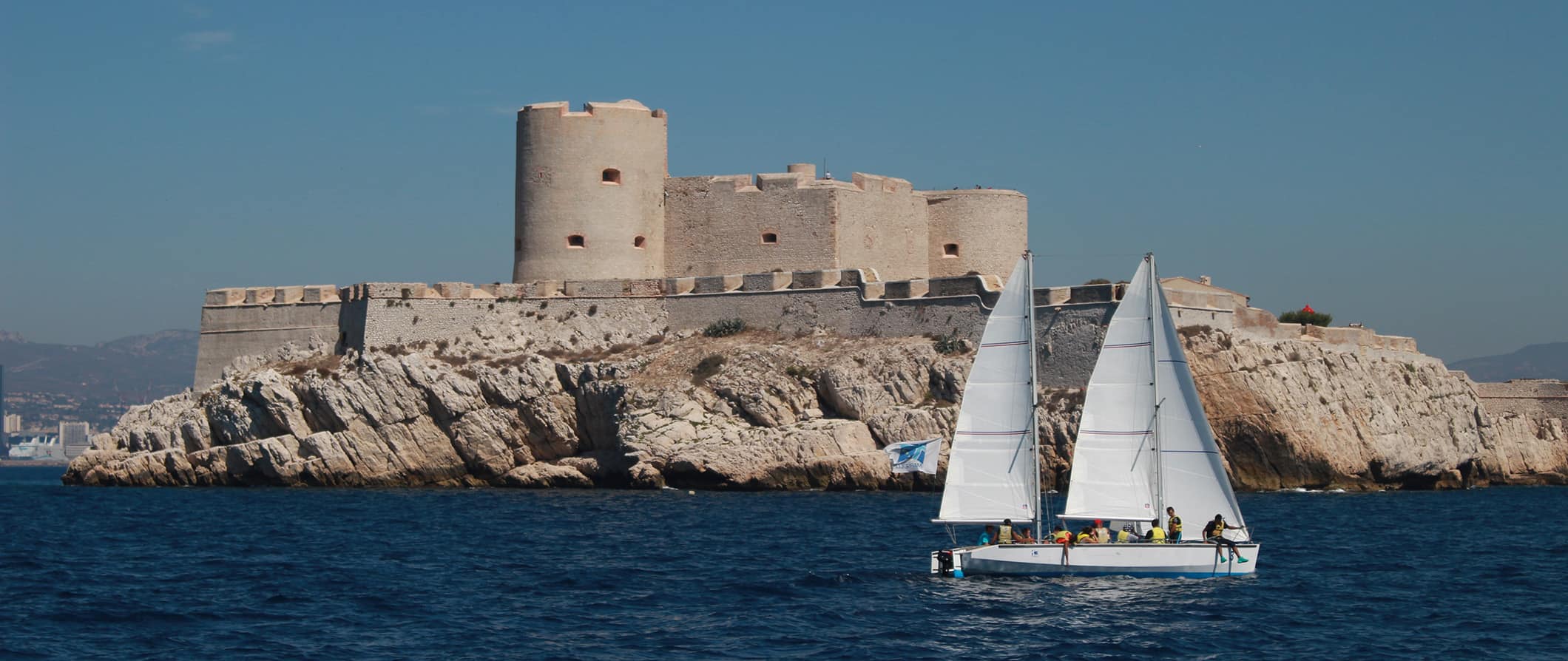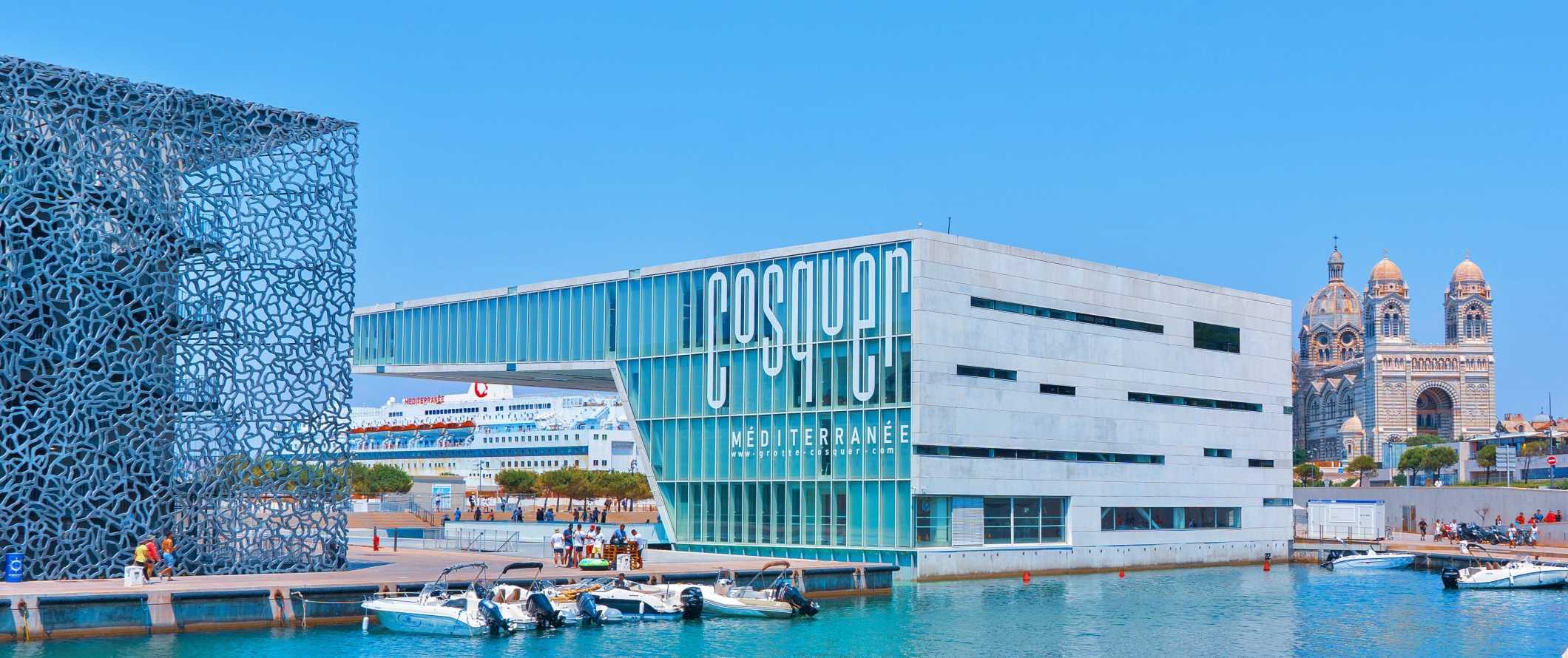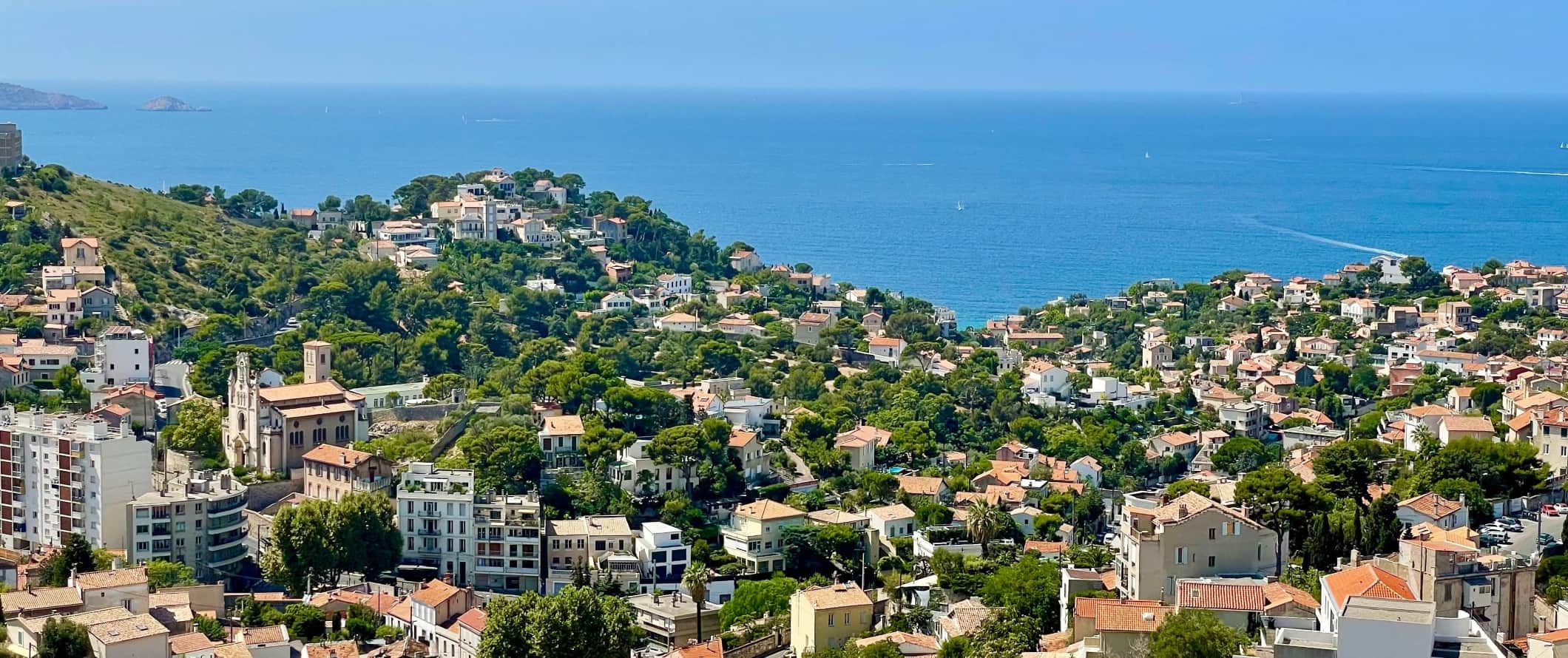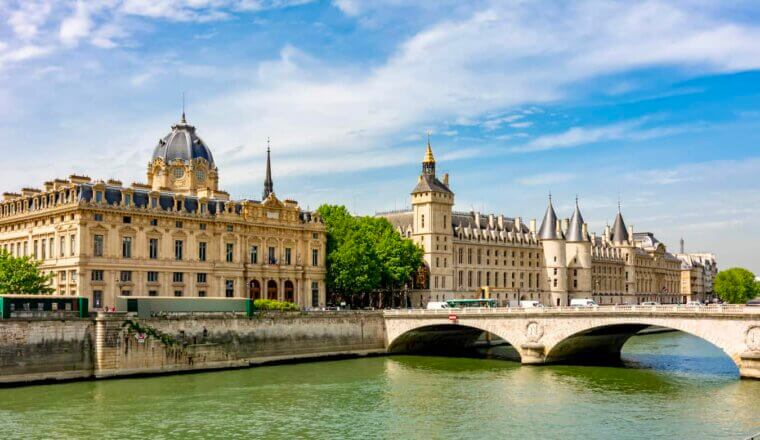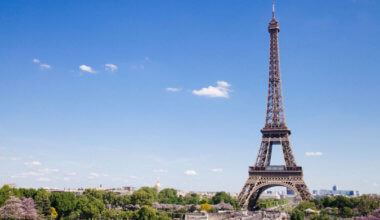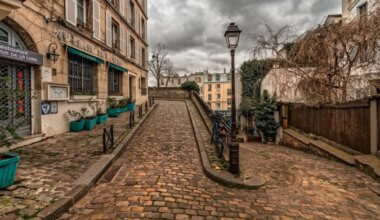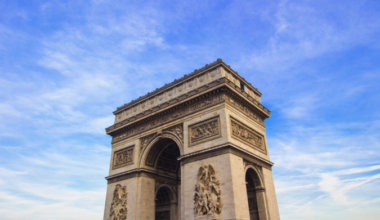Located in southeastern France, Marseille is France’s second-largest city. Founded around 600 BCE as a Greek port city, Marseille is a maritime hub and one of the most diverse cities in all of France. It’s also the oldest city in the country.
Modern Marseille is filled with nightlife, enticing restaurants, theaters, museums, and even an international soccer stadium. The city was chosen to be the European Capital of Culture in 2013 and, after Paris, has the most museums in the country. Marseille lacks the iconic beauty of Paris but, while the city is a bit gritty, I think the beautiful waterfront and historic buildings give it a unique vibe. It’s worth at least two nights here.
This travel guide to Marseille can help you plan your trip, save money, and make the most of your visit!
Table of Contents
Top 5 Things to See and Do in Marseille
1. Visit Le Vieux Port
The Old Port of Marseille is ideal for watching fishermen sell their fresh seafood. You can also hire a boat for the day here. For a relaxed visit, simply sit, read a book, eat, and gaze at all the expensive yachts in the harbor.
2. See the Notre Dame de la Garde
Known as “the big church,” this Byzantine and Romanesque Revival basilica sits at the highest point overlooking the city, making for one of the best views of Marseille. Old fishermen used to have their boats blessed in this church. Entrance is free but dress respectfully.
3. See the Vieille Charite
Home to the Museum of Mediterranean Archaeology and Museum of African, Oceanian, Amerindian Arts, Vieille Charite is a former almshouse built in the mid-17th century. Its architecture consists of an impressive three-floor corridor on a rectangular courtyard, with a domed Italian Baroque chapel in the center.
4. Walk La Corniche
This striking seaside walkway winds along the coast for 5 kilometers (3 miles), offering lovely scenic views over the sea, as well as Chateau d’If and Les Calanques (a steep-walled inlet made of limestone and dolomite) to the east. It’s a good way to spend a few hours!
5. Admire Château d’If
This small island located 1.5 kilometers (1 mile) off the city’s coast was a penal colony for political prisoners, including the Revolutionary hero Mirabeau and the Communards of 1871. It’s better known for its role in the novel by Alexandre Dumas, The Count of Monte-Cristo. Admission is 6 EUR.
Other Things to See and Do in Marseille
1. Roam around Le Cours Julien and La Plaine
This trendy part of Marseille is full of bookstores, cafes, vintage clothing stores, fountains, and colorful street art. Every Thursday and Saturday morning, La Plaine market takes place here, offering the opportunity to shop for everything from clothing and knick-knacks to shoes and delicious food. Treat yourself to dinner at Lacaille or opt for tapas at Le Couz’in.
2. Relax in Borély Park
Borély Park is known as one of the most remarkable parks in France and its captivating gardens are a highlight of visiting Marseille. Located near the ocean, this park was created in the 17th century by French merchant Joseph Borléy. You can wander the flowing English garden, the perfectly manicured French garden, and a Zen garden. Borély Park is also home to Château Borély, an 18th-century country home that now houses the Museum of Decorative Arts, Earthenware and Fashion. Admission is free.
3. Visit Le Panier
This is the oldest area of Marseille, dating back to around 600 BCE. In French, its name means “the basket” and was named for an inn that had a basket as a sign. In time, the hilltop neighborhood became known by the same name. Today, Le Panier is known as an artistic hub, with colorful street art adorning the buildings and artist studios dotting the neighborhood. Be sure to visit the Vieille Charité, a 17th-Century villa that has museums and exhibitions.
4. Go to La Place Castellane
This historic roundabout in the 6th arrondissement was built in 1774 and contains a magnificent fountain (the current fountain was added in 1913 to replace the original). The fountain represents the three Provençal rivers (Durance, Gardon, and Rhône). An obelisk was originally part of the fountain, but it was relocated in 1911 to the 9th arrondissement. The square is named after the aristocrat who funded the project, Henri-César de Castellane-Majastre, and was mentioned in Joseph Conrad’s 1919 novel The Arrow of Gold (Conrad also wrote the famous novel Heart of Darkness).
5. Wander the Mazargues War Cemetery
Over 9,000 square meters, Mazargues War Cemetery is the final resting place of allied soldiers from World War I and World War II. The bodies of soldiers and laborers were buried in various cemeteries in Marseille during WWI, however, after the war and before Armistice, the grounds of Mazargues Cemetery were expended and the remains of hundreds of soldiers were moved from the smaller cemeteries and laid to rest here. It is located about 6 km (3.5 miles) from central Marseille.
6. Visit the Palais de Longchamp
This monument opened in 1869 and celebrates the completion of the Durance canal, which brought fresh potable water into Marseille. The famous animal sculptor Antoine Louis Barye made the lions and tigers at the entrance, while the monumental fountain in the middle of the colonnade is by Jules Cavelier. It also hosts the Musée des Beaux-Arts, Marseille’s oldest museum, with its large collection of 16th-19th century Provencal and Italian artwork. Admission is free.
7. Eat in Noailles
This area of the city (around the Noailles subway station) is known for its Arab, Indian, and Chinese communities. It’s filled with delicious places to eat for. Try places like Les Portes de Damas, Caffé Noir, and Le 5.5 karaoke bar. There is also daily market where vendors sell North African specialties including spices, dried fruit, sticky pastries, flatbreads, and more.
8. Go diving
Diving may not be the first thing that comes to mind when you think of France, but Marseille is making a name for itself as the country’s diving capital. Take a trip out into the Mediterranean, where you can explore tunnels, caves, and admire colorful sea sponges, anemones, and sea fans. You can also spot moray eels and octopus as well as numerous of shipwrecks, such as Le Liban (1882) and Le Chaouen (1961). June to October, when the water is a bit warmer, are the best months for diving here. Prices start at 100 EUR.
9. Go on a Food Tour
Explore the historic district of Marseille on a 3.5-hour walking food tour. Food tours can be a fun way to learn about the history and culture of the city, while sampling regional foods such as tuna and shrimp tartare, tapenade, panisse, and roasted Camembert. Tours with Do Eat Better Tours start at 85 EUR.
10. Tour the Museum of Civilizations of Europe and the Mediterranean (MuCEM)
Inaugurated in 2013, this museum is located next to Fort St. Jean towards the entrance of the harbor. Designed by French architects Rudy Ricciotti and Roland Carta, the museum is a 15,000 square meter cube surrounded by a latticework of fiber and concrete. The museum features two levels of exhibits devoted to Mediterranean and European history, as well as an underground auditorium, and bookshop. The restaurant on the top of the museum offers one of the best viewpoints in the city. Tickets are 11 EUR, but you can walk around the exterior for free.
11. Go on a Wine Tour
When visiting Marseille, it is hard to pass up an opportunity to go on a wine tour. This is, after all, Provence. You can choose from half-day or full-day tours. Provence Wine Tours offers a full-day tour around Aix-en-Provence for 110 EUR, lunch not included. They also offer half-day tours for 70 EUR.
For more information on other cities in France, check out these guides:
Marseille Travel Costs
Hostel prices – A dorm with 4-6-beds costs 25-32 EUR per night. Private rooms start at 70 EUR. Free Wi-Fi is standard but no hostels in the city have self-catering facilities or include breakfast.
For those traveling with a tent, camping is available outside the city for 17 EUR per night for a basic plot without electricity.
Budget hotel prices – A budget hotel room with basic amenities like free Wi-Fi and AC costs around 65 EUR per night.
On Airbnb, private rooms cost about 40 EUR, while full apartments start at 65 EUR per night but average double that if you don’t book early).
Food – Food in France has a long history and is intricately intertwined with the culture at large. Fresh bread, tasty local cheeses, and plentiful wine may be stereotypical staples of the cuisine, but they really are some of the go-to foods in the country. Wine is especially popular in this region, as are olives and fresh olive oil. Seafood, lamb, sausage, and goat cheese are all especially popular here as well.
Marseille boasts plenty of traditional French restaurants, as well as numerous African, Corsican, and Mediterranean restaurants. Cheap sandwiches like falafel or a kebab cost about 5 EUR. Most lunch specials cost around 10 EUR for a meal.
In Vieux-Port, CopperBay Marseille is a cocktail bar that offers small plates such as pickled mussels, burrata cheese, and other savory snacks. Dishes cost around 9-13 EUR and cocktails are 8-12 EUR.
Neighborhoods such as Opéra and Noailles are also home to delicious restaurants, bars, and cafés. Deep on rue Giandeves, in Opéra, is probably one of the best coffee shops in the city.
A main dinner dish costs around 15-25 EUR, while a glass of wine costs 5-8 EUR. Expect to pay 10-13 EUR for a cocktail.
Fast food (think McDonald’s) costs around 9 EUR for a combo meal. Beer is 4-5 EUR while a latte or cappuccino is around 2.75 EUR.
If you’re cooking for yourself, expect to spend around 50 EUR per week on groceries. This gets you basic staples like pasta, rice, seasonal produce, and some meat or seafood.
Backpacking Marseille Suggested Budgets
If you’re backpacking Marseille, my suggested budget is about 70 EUR per day. This budget covers staying in a hostel dorm, cooking all of your meals, using public transportation to get around, limiting your drinking, and sticking to mostly free and cheap activities like free walking tours and enjoying nature.
A mid-range budget of about 145 EUR per day covers a private Airbnb room, eating at cheap restaurants for a few meals, enjoying a few glasses of wine, taking an occasional Uber to get around, and a couple of paid activities such as diving and visiting some museums.
On a “luxury” budget of 290 EUR or more per day, you can stay in a hotel, eat out for all your meals, drink more, take more taxis or rent a car, and do whatever yours and activities you want (including wine tours). This is just the ground floor for luxury though. The sky is the limit!
Marseille Travel Guide: Money-Saving Tips
Marseille is built for the luxury traveler and there’s not a lot of cheap things to do here. However, if you want to lower your costs, here are some ways to save money in Marseille:
- Explore on foot – Marseille is small enough to walk around and it’s a great way to experience the architecture and the vibes of the city without spending any money.
- Get the set lunch menu – If you eat out, do so at lunch and get the prix fixe menu (two- or three-course set menu). Restaurants throughout town offer this set menu during lunch, and with prices between 10-20 EUR, it’s a way better deal than the regular dinner menu.
- Get discount museum prices – Pick up a City Pass for free public transportation, free entry to museums and attractions, and discounts on tours. A one-day pass is 27 EUR, a two-day pass costs 37 EUR and a three-day pass costs 43 EUR.
- Take a free walking tour – If you want to learn more about the city, a free walking tour is a great place to start. You’ll learn about the history and architecture while getting to see all the major sights. Marseille Free Walking Tour is the best one. Just be sure to tip at the end!
- Stay with a local – If you want to save money and get some local insight into the city, use Couchsurfing. Staying with a local is the best way to get a feel for the city and learn some insider tips.
- Save money on rideshares – Uber is cheaper than taxis and is the best way to get around a city if you don’t want to wait for a bus or pay for a taxi.
- Bring a water bottle – The tap water here is safe to drink so bring a reusable water bottle to save money and reduce your plastic use. LifeStraw is my go-to brand as their bottles have built-in filters to ensure your water is always clean and safe.
Where to Stay in Marseille
There are only a few hostels and budget hotels in Marseille. Here are my recommended places to stay in Marseille:
How to Get Around Marseille
Public transportation – Tickets for the bus and the metro can be bought in metro stations, at tourist offices, or anywhere displaying the RTM sign. It’s best to buy groups of tickets at 3.40 EUR (2 trips) or 15 EUR (10 trips) to save a bit (prices on board the bus cost 2 EUR per trip). A day pass costs 5.20 EUR, a 3-day pass costs 10.80 EUR, and a 7-day pass costs 15.50 EUR.
Most public transportation in the city center stops running regularly around 9pm, so consider taking an Uber or a taxi if you’re in a hurry. There are, however, a couple of night buses that run through central Marseilles. Consider downloading the RTM app for current public transportation schedules.
If you get a City Pass tourism card, you’ll be able to ride the public transit for free.
Ferry – RTM also operates a ferry service between Vieux-Port and Estaque or La Pointe Rouge. Ticket prices are 5 EUR one-way. You can also take a ferry across Vieux-Port for 0.50 EUR, one-way.
Bicycle – Le Vélo is a public bike-sharing system that lets you rent bicycles around the city once you register online. It costs 1 EUR to register, which gives you a 7-day pass. The first 30 minutes are free and it costs 1 EUR per hour after that.
Taxi – Taxis are expensive in Marseille, with a base rate of 2 EUR plus about 1.72 EUR per kilometer. This rate may increase in the evenings so skip the taxis if you can — they add up fast!
Ridesharing – Uber is available in Marseille and is generally cheaper than taxis. That said, the city is small so you shouldn’t really need to use it much.
Car rental – Car rentals start at 30 EUR per day for a multi-day rental. You’ll only really need a car if you’re doing some day trips outside the city though. Drivers need to be at least 21 years of age.
When to Go to Marseille
Summer is the most popular time to visit Marseille. This is also the hottest time of the year, with temperatures daily highs reaching 30°C (86°F). Summer is peak season in Marseille, and the streets are filled with backpackers and European vacationers who want to soak up the ambiance of the south of France in all its hot glory.
September and October, when the average high temperature is 24°C (75°F), is an ideal time to visit Marseille. In autumn, the crowds lessen considerably and the Mediterranean is still perfect for swimming. The days are usually warm, but the nights can be cooler.
In spring, Carnaval de Marseille takes place (April) in Bolély Park, with colorful costumed floats, live music, games, and family entertainment. The temperature in spring averages around 18°C (65°F).
The Christmas season, although chilly, is an excellent time to explore the markets and festivities. The Santon Fair, one of the oldest fairs in Provence, takes place throughout the month of December and features hand-painted terracotta nativity figurines created by local artisans. The average temperature in winter is 10°C (50°F).
How to Stay Safe in Marseille
Marseille is very safe and the risk of violent crime here is very low. As in any destination, avoid walking through unfamiliar areas alone at night and beware of pickpocketing and petty theft. Pickpocketing is most common around the train station and tourist areas so always keep your belongings secure and out of reach.
Solo female travelers should feel safe here, though the standard precautions apply (never leave your drink unattended at the bar, never walk home alone intoxicated, etc.)
As with most major cities, there are neighborhoods to avoid. It’s a good idea to be extra cautious in neighborhoods like Quartiers Nord, Malpassé, Felix Payat, and Le Caillols where crime is a higher risk.
If you’re worried about getting scammed, you can read about this post on common travel scams to avoid.
If you experience an emergency, dial 112 for assistance.
Always trust your gut instinct. Avoid isolated areas at night and be aware of your surroundings at all times. Make copies of your personal documents, including your passport and ID.
The most important piece of advice I can offer is to purchase good travel insurance. Travel insurance will protect you against illness, injury, theft, and cancellations. It’s comprehensive protection in case anything goes wrong. I never go on a trip without it as I’ve had to use it many times in the past.
Marseille Travel Guide: The Best Booking Resources
These are my favorite companies to use when I travel. They consistently have the best deals, offer world-class customer service and great value, and overall, are better than their competitors. They are the companies I use the most and are always the starting point in my search for travel deals.
- Skyscanner – Skyscanner is my favorite flight search engine. They search small websites and budget airlines that larger search sites tend to miss. They are hands down the number one place to start.
- Hostelworld – This is the best hostel accommodation site out there with the largest inventory, best search interface, and widest availability.
- Booking.com – The best all around booking site that constantly provides the cheapest and lowest rates. They have the widest selection of budget accommodation. In all my tests, they’ve always had the cheapest rates out of all the booking websites.
- Get Your Guide – Get Your Guide is a huge online marketplace for tours and excursions. They have tons of tour options available in cities all around the world, including everything from cooking classes, walking tours, street art lessons, and more!
- SafetyWing – Safety Wing offers convenient and affordable plans tailored to digital nomads and long-term travelers. They have cheap monthly plans, great customer service, and an easy-to-use claims process that makes it perfect for those on the road.
- LifeStraw – My go-to company for reusable water bottles with built-in filters so you can ensure your drinking water is always clean and safe.
- Unbound Merino – They make lightweight, durable, easy-to-clean travel clothing.
- Top Travel Credit Cards – Points are the best way to cut down travel expenses. Here’s my favorite point earning credit cards so you can get free travel!
- BlaBlaCar – BlaBlaCar is a ridesharing website that lets you share rides with vetted local drivers by pitching in for gas. You simply request a seat, they approve, and off you go! It’s a cheaper and more interesting way to travel than by bus or train!
Marseille Travel Guide: Related Articles
Want more info? Check out all the articles I’ve written on backpacking/traveling France and continue planning your trip:
